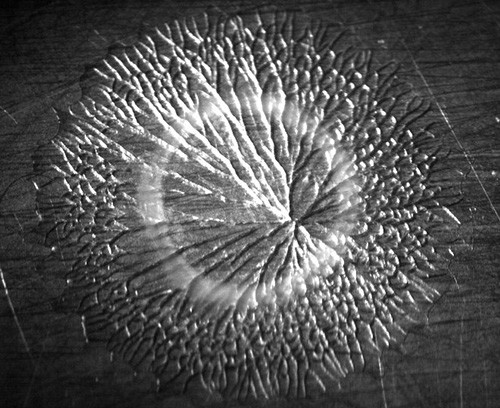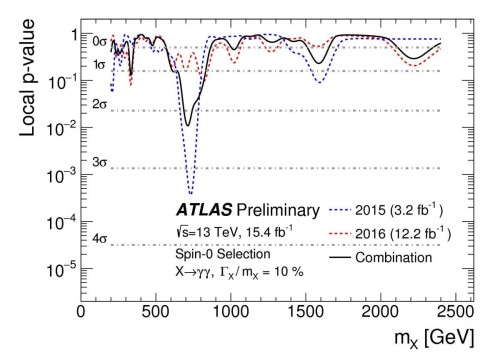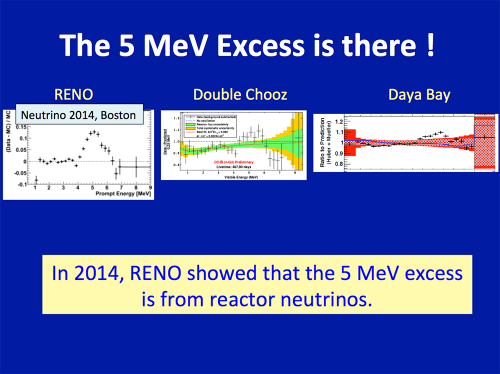Posts by: Tushna Commissariat
Award-winning ‘Bailys Beads’, schoolyard accelerators , pulsar poems and more
By Tushna Commissariat
Its officially that time of the year again when we can marvel at this year’s winners of the Insight Astronomy Photographer of the Year 2016. The awards ceremony, held at the Royal Greenwich Observatory, has unveiled some truly spectacular and ethereal shots of our universe. The overall winner this year is a truly amazing composite image of the 2016 total solar eclipse that shows the ‘Baily’s Beads’ phenomenon and was taken by photographer Yu Jun in Luwuk, Indonesia. In the video above, the judges explain why this particular image was the main winner for the year.
View all posts by this author | View this author's profile
Primal colours across the spectrum, impossible space engines
By Tushna Commissariat
Physicists and artists have long been intrigued and drawn in by the various mysteries that light and its many colours offer. In the latest installation to be unveiled at the Natural History Museum in London, artist Liz West has unveiled her stunning new work dubbed Our Spectral Vision. The exhibit aims to delve into the long and complex history of the development of colour and vision “through the eyes of nature”. Our regular readers will recall the many physics papers that look into the same, from the structural colour of butterflies to the nanostructures in avian eggshells to the mantis shrimp’s visual superpowers. West’s exhibit deals with many of these topics and more including some fantastic “350 rarely seen specimens, from beautiful birds to fossils of the first organisms with eyes”. If you are based in the UK, do visit the exhibit and otherwise, take a look at the video above to see through West’s eyes.
View all posts by this author | View this author's profile
Cracking water drops caught on camera

(Courtesy: E Ghabache et al./Phys. Rev. Lett.)
By Tushna Commissariat
Drops of water normally tend to splash when they strike a surface. But what happens if they hit something very cold? It turns out they first freeze and then crack, forming intricate fracture patterns, one of which you can see in the image above.
It was taken using a high-speed camera by Christophe Josserand, Thomas Séon and colleagues at the Jean Le Rond d’Alembert Institute in France. They watched water solidifying as it dripped onto a stainless-steel surface cooled to various temperatures between 0 and −60 °C (Phys. Rev. Lett. 117 074501). Due to the contact between the drop and the surface, the water’s ability to freeze is limited and mechanical stress makes it fracture in a few milliseconds.
View all posts by this author | View this author's profile
Plush toys launched into space, interplanetary mining missions and more
By Tushna Commissariat
The European Space Agency’s (ESA) Rosetta spacecraft has, as of this week, spent two full years in orbit around comet 67P/Churyumov–Gerasimenko, since it reached its destination in August 2014. While Rosetta was the mothership, it also deposited its “baby” lander called Philae onto the comet’s surface in November that year. Sadly Philae was switched off in July this year. If you feel like you want to relive the excitement of the initial launch, take a look at the video above. The folks over at Design and Data, who created Rosetta’s iconic cartoons and memorabilia for ESA, launched a plush-toy version of the spacecraft into space, to see how it would fare. Watch the video to see how their “mission” played out.
View all posts by this author | View this author's profile
And so to bed for the 750 GeV bump

No bumps: ATLAS diphoton data – the solid black line shows the 2015 and 2016 data combined. (Courtesy: ATLAS Experiment/CERN)
By Tushna Commissariat
After months of rumours, speculation and some 500 papers posted to the arXiv in an attempt to explain it, the ATLAS and CMS collaborations have confirmed that the small excess of diphoton events, or “bump”, at 750 GeV detected in their preliminary data is a mere statistical fluctuation that has disappeared in the light of more data. Most folks in the particle-physics community will have been unsurprised if a bit disappointed by today’s announcement at the International Conference on High Energy Physics (ICHEP) 2016, currently taking place in Chicago.
The story began around this time last year, soon after the LHC was rebooted and began its impressive 13 TeV run, when the ATLAS collaboration saw more events than expected around the 750 GeV mass window. This bump immediately caught the interest of physicists the world over, simply because there was a sniff of “new physics” around it, meaning that the Standard Model of particle physics did not predict the existence of a particle at that energy. But also, it was the first interesting data to emerge from the LHC after its momentous discovery of the Higgs boson in 2012 and if it had held, would have been one of the most exciting discoveries in modern particle physics.
Sporty physics, the pub in a Faraday cage, LEGO NASA women and more
By Michael Banks and Tushna Commissariat
The Rio 2016 Olympics will kick off tomorrow and over the next three weeks, while you enjoy watching the world’s top athletes compete in the huge variety of sports, spare a thought for the physics involved. From how to throw a ball to running, from pole vaulting to golf, physics and sport are fellow brethren. Head on over on the JPhys+ blog to read “The big physics of sport round-up!” post and watch our video series above, in between cheering on your favourite teams.
View all posts by this author | View this author's profile
In flight around the world’s brightest laser and the inverse Cheerio effect
By Tushna Commissariat
If you have never been one of the lucky few to have wandered the tunnels of a particle accelerator, but have always wondered what lies within, take a look at the video above. The European X-ray Free Electron Laser (European XFEL) – which is currently under construction in Germany and will come online next year – will provide ultrashort (27,000 X-ray flashes per second) and ultrabright X-ray laser flashes that are needed to study chemical reactions in situ or to study extreme states of matter (you can read more about the kind of research that will be done there in the September issue of Physics World magazine). The XFEL tunnel is 3.4 km long and you can zoom across all of it in the 5 minute long video. I particularly enjoyed watching particular locations where engineers could be seen carrying out tests, as well as watching folks on bicycles wobble out of the camera’s way.
On a slightly related note, if, like me, you occasionally get a bit muddled when it comes to certain details of different particle accelerators – for example which came first, the synchrotron or the cyclotron – take a look at this excellent “primer” over at Symmetry magazine.
View all posts by this author | View this author's profile
Dinner that’s out of this world, Higgs pizza and a cosmic symphony
By Michael Banks and Tushna Commissariat
Before setting off to the International Space station (ISS) for six months, UK astronaut Tim Peake revealed that one of the meals he would miss most is the classic British roast dinner. So what better way to celebrate the 44 year old’s safe return to Earth last month than to create a portrait of him made from his favourite nosh? Designed by UK “food artist” Prudence Staite for the Hungry Horse pub chain, the culinary creation took 20 hours to make – you can watch a timelapse video of it being created above. The finished portrait weighed in at 12 kg and says “Welcome Home Tim”. Hungry Horse has even offered Tim and his family free roast dinners for life.
View all posts by this author | View this author's profile
Neutrinos that go bump in the night

Triple bump: the 5 MeV bump data presented by K Joo at the Neutrino 2016 conference. (Courtesy: RENO Collaboration)
By Tushna Commissariat
A final mystery that was mentioned at the Neutrino 2016 I attended in London this week was yet another unexpected “bump” in data at 5 MeV, measured while monitoring the neutrino flux from nuclear power plants. Starting with the RENO experiment in 2012, it was spotted by the Double Chooz experiment in 2014 and finally by the Daya Bay neutrino experiment earlier this year. While the initial signal was not of high enough statistical significance, it has now held up over time and more measurements.
Limiting factors for the elusive sterile neutrino
By Tushna Commissariat
More data are definitely needed in the quest for the sought-after sterile neutrino. That much was clear as more than 10 different global neutrino detectors announced at the Neutrino 2016 conference in London that they have found no evidence for the slippery particle’s existence. The sterile neutrino is a hypothetical and much-debated fourth type of neutrino that would contribute mass, but only interact with the other three “active neutrinos”, making it that much more difficult to detect. In the video above, Physics World features editor Louise Mayor explains why researchers are so keen to nail down this particle, should it exist, as it may single-handedly explain some of the biggest mysteries in physics today, including dark matter.
View all posts by this author | View this author's profile